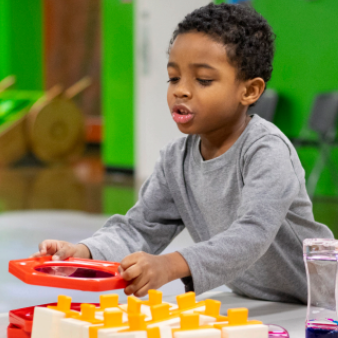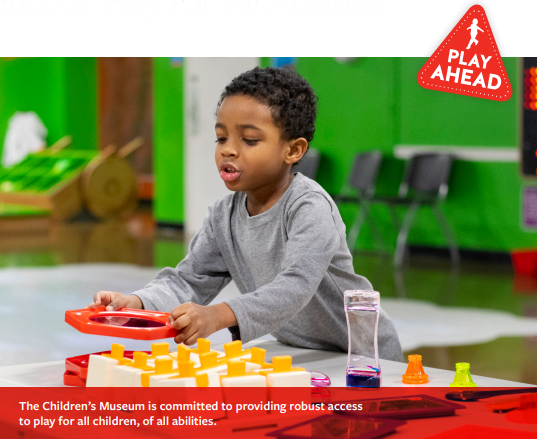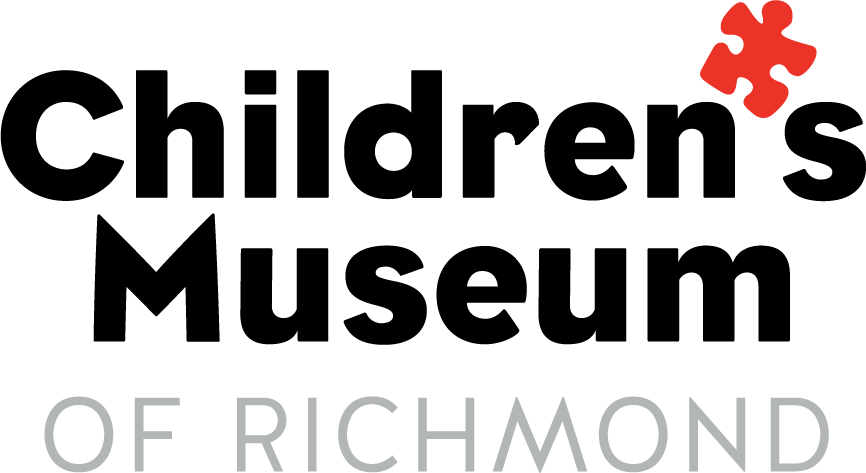The Benefits of Play for All Abilities
Bridging the Benefits of Play for All Abilities From fundamental concepts to socialization skills, language development and much more, recent research shows that play has a positive impact on a child’s development. Further, the more often children engage in play — especially in safe, supportive and encouraging surroundings such as those found at all four…
Published on March 31, 2020

Bridging the Benefits of Play for All Abilities
From fundamental concepts to socialization skills, language development and much more, recent research shows that play has a positive impact on a child’s development.
Further, the more often children engage in play — especially in safe, supportive and encouraging surroundings such as those found at all four area locations of the Children’s Museum — the more likely they are to enjoy its many benefits.

A child’s age, stage of development and skill sets can all affect how they learn to navigate different forms of play. Likewise, different environments may offer unique opportunities for development, such as learning to play with others at school versus playing in your own backyard.
When children are given the opportunity to easily and confidently explore outcomes and alternative ways of playing, they benefit in measurable ways. That’s one reason the Children’s Museum is committed to providing robust access to play for all children, of all abilities.
By weaving inclusive and adaptive tools throughout the planning and execution of each exhibit and learning station, the Children’s Museum creates an environment that strives to provide every child with the ability to play.
Working closely with the Department of Occupational Therapy at Virginia Commonwealth University, the Children’s Museum has implemented a framework for play known as a “Universal Design for Learning,” or UDL for short. The goal of the UDL framework is not only to accommodate the needs of all children, but also to foster enhanced engagement, through flexible environments that take into account the many important differences in abilities and development that can sometimes keep a child from benefiting from play.
Through this partnership with VCU, the Children’s Museum is better able to craft inclusive programs, appropriate for children of all abilities. These programs are realized in a variety of forms — from Family Engagement Activities, designed to support hands-on learning that engages the caregiver as well as the child, to a “Living Lab,” where psychology students conduct live research on the Museum floor, helping parents and caregivers learn more about childhood development.
In addition, the Museum schedules a series of free, monthly “Special Nights,” sponsored by the Altria Companies Employee Community Fund, where access to the Museum is specifically provided to families that have children with a wide variety of special needs. During these nights, families can explore the museum at their own pace, often with less instances of crowding and bright lights, along with adaptive materials to help children with unique developmental challenges.
The commitment to greater access for children of all abilities is driven by the Children’s Museum’s understanding of the fact that children acquire information and knowledge in a variety of ways. In addition, there are multiple means of expression that can provide a child with learning alternatives to more accurately demonstrate what they know, and a range of positive engagements that help to best tap into a child’s individual interests, challenges and motivations.
From fundamental educational concepts to socialization skills, research clearly shows that play has a positive impact on a child’s development — and the more often they engage in play, the more likely they are to find success both inside and outside the classroom. With supportive environments such as those found at the Children’s Museum, parents and caregivers can make this positive impact a reality for children of all abilities.
The Children’s Museum is much more than a fun place for their children to play, indoors and out (although it is definitely that!). It’s also an active and evolving opportunity for children of all abilities, along with their families, to grow and learn together.
At the Children’s Museum, growth is inspired by engaging all children in the power of play, knowing that everyone can learn more — and learn better — when they play together. Or to put it another way, when children play ahead, they get ahead!
